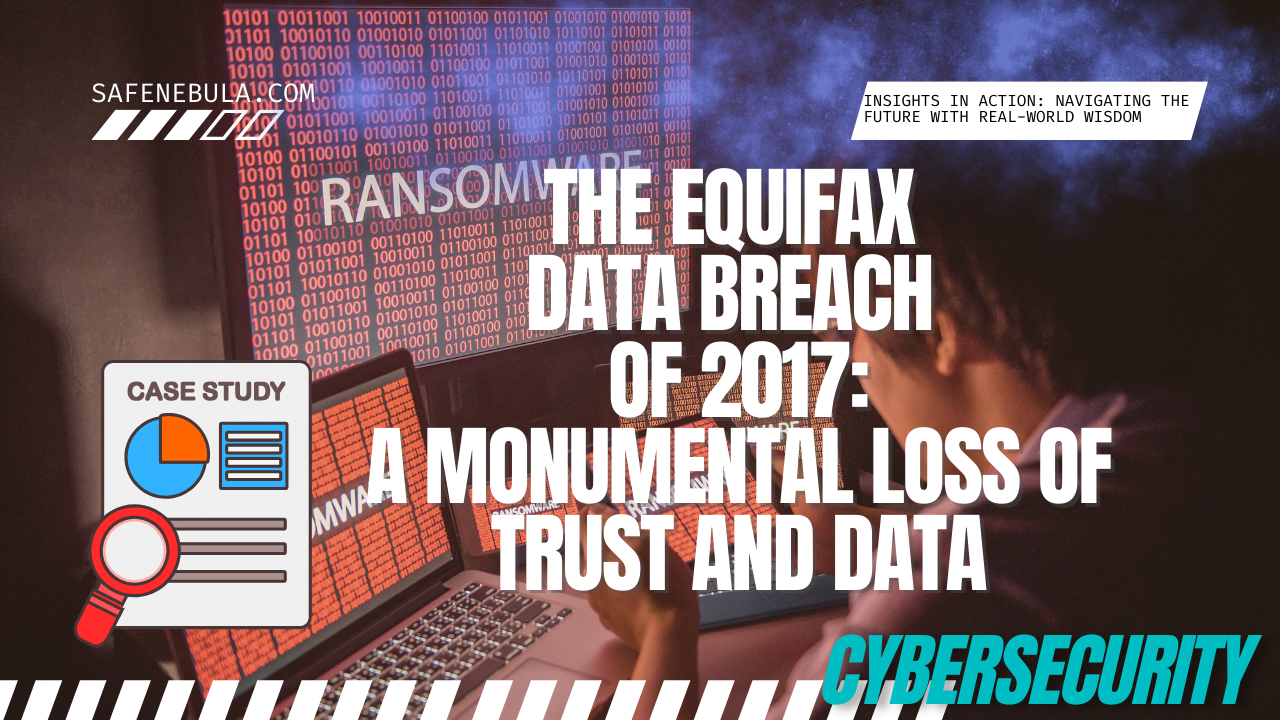Introduction
In 2017, the credit reporting giant Equifax fell victim to one of the most significant data breaches in history, compromising the personal information of approximately 147 million people. This monumental security failure not only exposed the sensitive data of nearly half the U.S. population but also laid bare the profound vulnerabilities in the protection of personal identifiable information (PII) on a global scale. The breach became a pivotal moment, highlighting the urgent need for more robust data protection measures and rapid response strategies, and it severely impacted consumer trust and corporate accountability. This comprehensive analysis delves into the background, the suspected perpetrators, the vulnerabilities exploited, and the widespread impact of the Equifax data breach, offering crucial lessons learned and outlining the path forward in the realm of data security.

Background and Intentions
The Equifax data breach was the result of attackers exploiting a vulnerability in the Apache Struts web application framework, which supported Equifax’s online dispute portal. The breach was not the result of a targeted attack with specific intentions against Equifax but rather an opportunistic exploitation of known vulnerabilities that Equifax had failed to patch in a timely manner.
Perpetrator Information
- Likely Perpetrator: While initial speculation suggested various actors, the U.S. Department of Justice in 2020 indicted four members of the Chinese military, attributing the breach to a state-sponsored cyber espionage operation.
- Level of Confidence: The indictment was made with high confidence, based on extensive forensic analysis and investigation by the FBI and other cybersecurity experts.
- Why: The attribution to state-sponsored actors suggests that the breach’s motivation may have extended beyond mere financial gain, potentially aiming at collecting intelligence for the Chinese government.
Vulnerabilities and Techniques
The attackers exploited a known vulnerability in the Apache Struts framework, specifically CVE-2017-5638, which Equifax had not patched despite the availability of fixes. The breach was facilitated by insufficient network segmentation, which allowed the attackers to access significant portions of Equifax’s network and exfiltrate data undetected over several weeks.
Affected Organization
Equifax is one of the three largest credit agencies in the U.S., holding an extensive amount of PII, including names, Social Security numbers, birth dates, addresses, and in some instances, driver’s license numbers. The breach significantly damaged Equifax’s reputation, highlighting systemic failures in their approach to cybersecurity and data protection.
Communications to External Parties
Equifax’s handling of external communications post-breach faced widespread criticism. The company waited six weeks after discovering the breach to inform the public and experienced numerous missteps in the rollout of support services for affected individuals, including a website that initially appeared to be phishing and customer service lines that were overwhelmed.
The Spread and Impact
The breach impacted approximately 147 million consumers worldwide, leading to a massive loss of trust in Equifax and raising concerns over the security of personal data held by similar institutions. The incident had far-reaching implications for financial security, identity theft risks, and the overall perception of corporate responsibility in handling consumer data.
Legal and Social Repercussions
- Legal Actions: Equifax faced numerous lawsuits from consumers, states, and shareholders, along with investigations by federal and state agencies.
- Settlements: Equifax agreed to a settlement with the Federal Trade Commission (FTC), the Consumer Financial Protection Bureau (CFPB), and 50 U.S. states and territories, which included up to $425 million to help people affected by the breach.
- Regulatory Impact: The breach prompted calls for stricter data protection regulations and practices, influencing the debate around privacy laws in the U.S. and abroad.

Timeline
- March 2017: The vulnerability in Apache Struts is publicly disclosed, and a patch is released.
- May 2017: Attackers exploit the vulnerability to gain unauthorized access to Equifax’s systems.
- July 29, 2017: Equifax discovers the breach but does not immediately disclose it.
- September 7, 2017: Equifax publicly announces the breach, revealing that it impacted 147 million consumers.
Lessons Learned
The Equifax data breach underscored the necessity of timely patch management, robust cybersecurity defenses, and effective incident response strategies. It highlighted the need for greater transparency and accountability in handling and protecting consumer data and catalyzed discussions on enhancing legal and regulatory frameworks to safeguard personal information.
Conclusion
The Equifax data breach of 2017 remains one of the most consequential data security incidents, serving as a stark reminder of the vulnerabilities that persist in protecting sensitive information. It brought to light the critical need for organizations to prioritize the security of personal data through improved practices, policies, and technologies. As we move forward, the lessons learned from the Equifax breach must inform a more vigilant and proactive approach to cybersecurity, ensuring that trust and privacy are not compromised in our increasingly digitized world

Are defects and weaknesses tracked from discovery and notification through to remediation?
Are there some industries that should be more concerned than others about insider threats?
Do you have a designated security team and response workflows for handling known threats?
Does your organization provide employees with cybersecurity training on a regular basis?
What backup-restore capabilities are in place to assist in recovering from the incident?
What characteristics can indicate an employee could become a prospective insider threat?
What other recent security incidents occurred in the affected environment or organization?
What would staff and management do differently the next time a similar incident occurs?
When sending sensitive information through email, is the information properly encrypted?
This Data Breach Guide is unlike books you’re used to. If you’re looking for a textbook, this might not be for you. This book and its included digital components is for you who understands the importance of asking great questions. This gives you the questions to uncover the Data Breach challenges you’re facing and generate better solutions to solve those problems.
